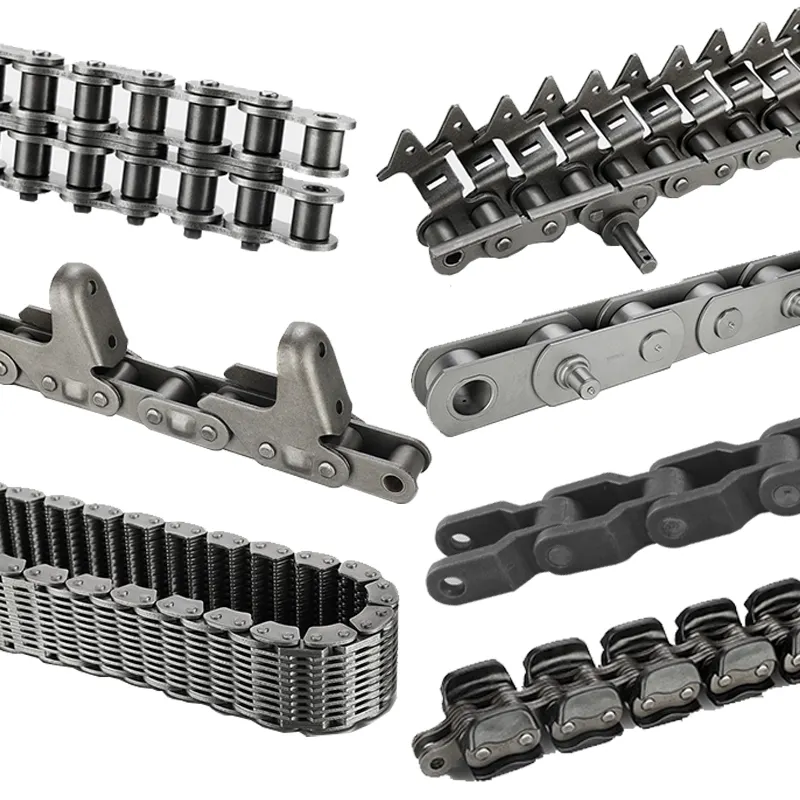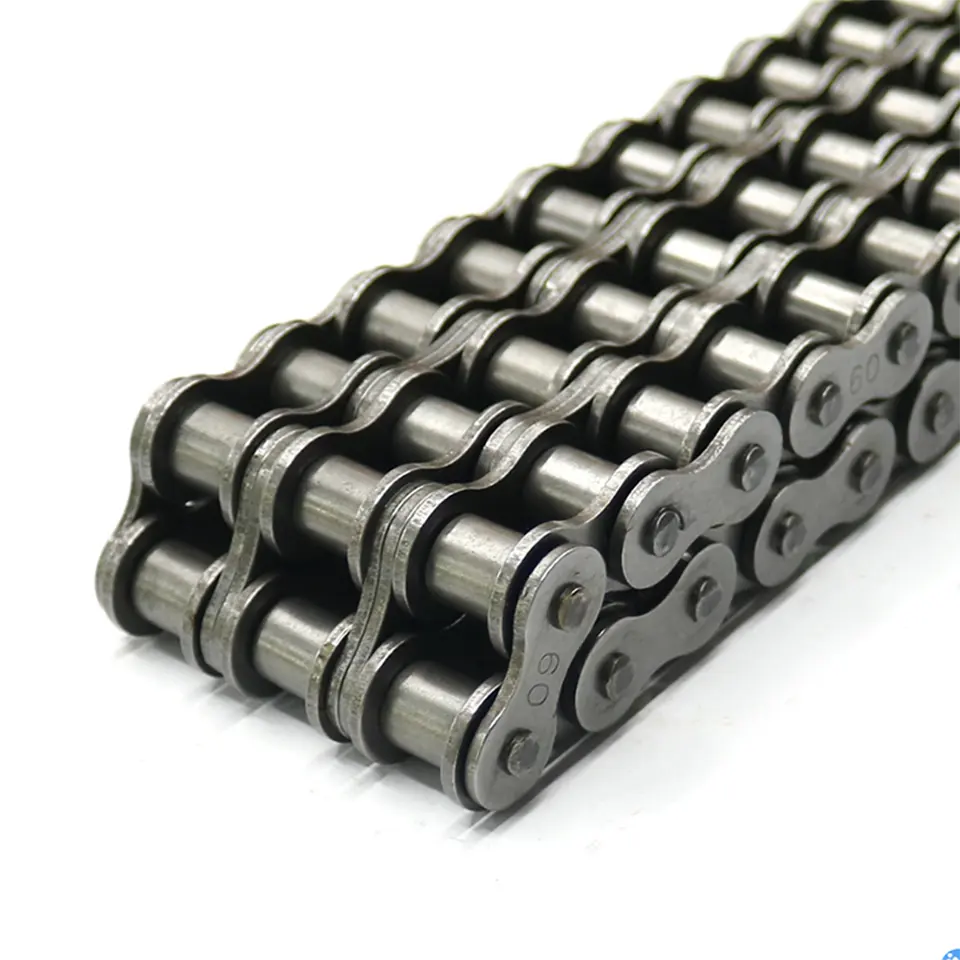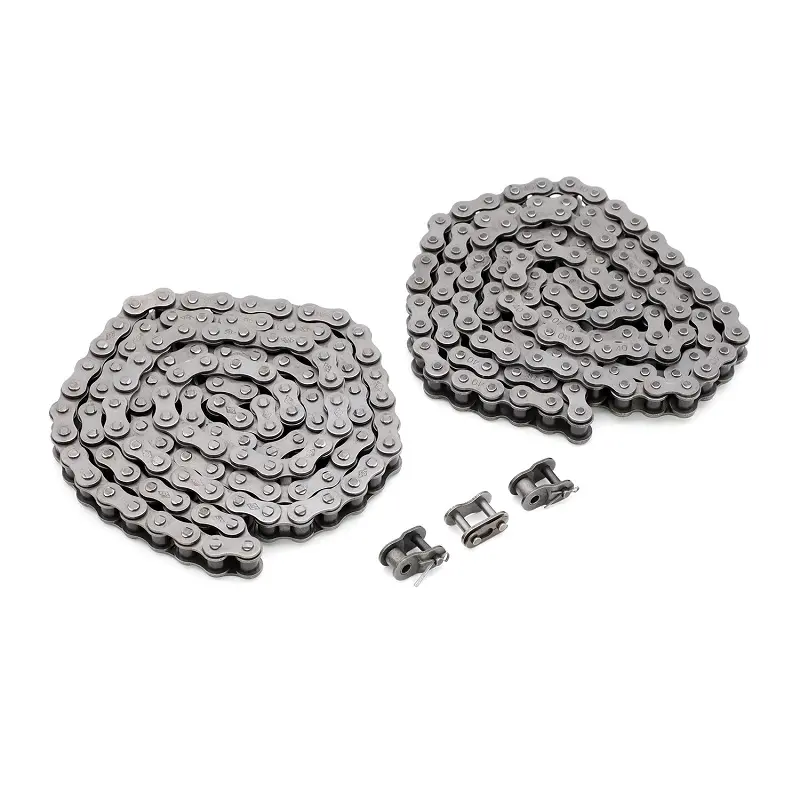Product Description
g80 alloy steel heavy duty industrial lifting chain
Production info as belows:
High strength 22mm CHINAMFG Steel Chain Black Chain
Size: 6mm-42mm
Material: Alloy steel,
Surface treatment: Galvanized, Black painted, Self color, Polishing, Powder coated
Color: Self color, black
Application: Ship, iron and steel industry, petroleum chemical industry, coal mine
The chains technical specifications as belows:
| Size(mm) | Min inside width | Max outside width | Weight(kg/m) | working load(KN) | test load(KN) | test load(KN) |
| 6*18 | 7.5 | 21 | 0.79 | 11 | 27 | 45.2 |
| 7*21 | 9 | 24.5 | 1.07 | 15 | 37 | 61.6 |
| 8*24 | 10 | 28 | 1.38 | 20 | 48 | 80.4 |
| 9*27 | 11.5 | 30 | 1.9 | 24.5 | 61 | 102 |
| 10*30 | 12.5 | 35 | 2.2 | 32 | 76 | 125 |
| 12*36 | 15.5 | 42.2 | 3.3 | 49 | 117 | 196 |
| 13*39 | 16.3 | 46 | 3.8 | 50 | 128 | 214 |
| 14*42 | 18 | 49 | 4.13 | 63 | 150 | 250 |
| 16*48 | 20 | 56 | 5.63 | 80 | 192 | 320 |
| 18*54 | 23 | 63 | 6.85 | 100 | 246 | 410 |
| 20*60 | 25 | 70 | 8.6 | 125 | 300 | 500 |
| 22*66 | 28 | 77 | 10.5 | 153 | 366 | 610 |
| 24*72 | 32 | 82 | 12.78 | 180 | 432 | 720 |
| 26*78 | 35 | 91 | 14.87 | 213 | 510 | 650 |
| 30*90 | 38 | 105 | 19.6 | 283 | 678 | 1130 |
| 32*96 | 40 | 106 | 22.29 | 322 | 772 | 1289 |
| 34*102 | 46.5 | 121.5 | 25.5 | 363 | 870 | 1450 |
| 36*108 | 49.5 | 128.5 | 31 | 407 | 978 | 1630 |
| 38*114 | 52 | 136 | 32 | 453 | 1086 | 1810 |
| 42*126 | 55.5 | 144.5 | 38.6 | 554 | 1332 | 2200 |
Factory pic as belows:
Welding machine:
Heat treatment:
Packing pic as belows:You can select gunny bag, ton bag, wooden case or iron drum packing
| Item Name: | G80 Lifting Chain |
|---|---|
| Material: | Alloy Steel |
| Surface Treatment: | Self Color or Black Finished |
| Surface: | Welded Chain |
| Chain Size: | G80 10mm |
| Working Load: | 3.2t |
| Samples: |
US$ 2.3/Meter
1 Meter(Min.Order) | |
|---|
| Customization: |
Available
| Customized Request |
|---|

How does an industrial chain contribute to overall production efficiency?
An industrial chain plays a crucial role in enhancing overall production efficiency in various industries. Here are several ways in which an industrial chain contributes to production efficiency:
- Power transmission: Industrial chains efficiently transmit power from the drive source to different components of the machinery or equipment, enabling smooth and consistent operation. This ensures that the production process runs without interruptions or power loss, maximizing overall efficiency.
- Conveying and material handling: Industrial chains are commonly used in conveyor systems to transport materials, products, or components along the production line. They facilitate the movement of goods from one process to another, reducing manual handling and streamlining material flow. This improves production efficiency by minimizing bottlenecks, reducing cycle times, and optimizing resource utilization.
- Positioning and indexing: In automated assembly or packaging systems, industrial chains are used to precisely position and index workpieces or products. This enables accurate and efficient assembly, reducing errors and rework. The precise positioning capabilities of industrial chains contribute to improved production efficiency and product quality.
- Mechanical synchronization: Industrial chains are employed in machinery with multiple moving parts that require synchronization, such as in printing presses or packaging equipment. By linking and coordinating the movement of various components, industrial chains ensure precise timing and alignment, resulting in smooth operation and increased production efficiency.
- High load capacity: Industrial chains are designed to withstand heavy loads and transmit high levels of torque. This allows them to handle demanding applications and heavy-duty processes effectively. By providing reliable and robust power transmission, industrial chains contribute to improved production efficiency in industries that require the handling of substantial loads.
- Durability and reliability: Industrial chains are engineered to be durable and resistant to wear and fatigue, even in harsh operating conditions. Their long service life and minimal maintenance requirements contribute to increased production uptime and reduced downtime, enhancing overall production efficiency.
By facilitating power transmission, material handling, precise positioning, synchronization, and offering high load capacity, durability, and reliability, industrial chains play a vital role in optimizing production efficiency across various industries.

Can an industrial chain be used in high-temperature environments?
An industrial chain’s suitability for high-temperature environments depends on the specific chain type, material, and operating conditions. While some industrial chains are designed to withstand elevated temperatures, others may experience performance issues or damage when exposed to excessive heat.
Industrial chains used in high-temperature applications are typically constructed using materials that exhibit excellent heat resistance. Common materials include heat-resistant alloys, stainless steel, or specialized coatings that can withstand the elevated temperatures without compromising the chain’s strength or integrity.
When considering the use of an industrial chain in high-temperature environments, several factors should be taken into account:
- Temperature Range: Determine the maximum temperature the industrial chain will be exposed to. Different chain materials have different temperature limits, and it’s crucial to select a chain that can withstand the specific temperature range.
- Chain Type: Certain chain types, such as roller chains or silent chains, may be better suited for high-temperature applications than others. Consult the manufacturer’s guidelines and specifications to ensure the chosen chain type is suitable for the intended temperature range.
- Lubrication: Proper lubrication is essential in high-temperature environments to minimize friction, reduce wear, and ensure smooth chain operation. Special high-temperature lubricants or dry lubrication methods may be required to maintain chain performance under elevated temperatures.
- Heat Dissipation: Consider the ability of the industrial chain and the surrounding equipment to dissipate heat effectively. In some cases, additional cooling mechanisms or heat shielding may be necessary to protect the chain and prevent overheating.
- Application Requirements: Assess the specific demands of the application, such as load, speed, and cyclic operation, and ensure that the chosen industrial chain can handle these conditions at high temperatures.
It’s important to consult the manufacturer’s recommendations and technical documentation to verify the suitability of an industrial chain for high-temperature environments. Working with experienced engineers or industry experts can also provide valuable insights and guidance in selecting the appropriate chain for such applications.

What are the maintenance requirements for an industrial chain?
Maintaining an industrial chain is crucial to ensure its optimal performance and extend its lifespan. Here are some key maintenance requirements for industrial chains:
- Cleaning: Regularly clean the industrial chain to remove dirt, debris, and contaminants that can cause friction and wear. Use a suitable solvent or cleaning agent recommended by the chain manufacturer.
- Lubrication: Apply the appropriate lubricant to the chain according to the manufacturer’s recommendations. Lubrication reduces friction, minimizes wear, and helps prevent corrosion. Regularly inspect the lubrication levels and replenish as needed.
- Tension Adjustment: Check the tension of the industrial chain regularly. Ensure it is within the recommended range specified by the manufacturer. Improper tension can lead to excessive wear, reduced performance, and increased stress on the chain components.
- Alignment: Verify that the industrial chain is properly aligned with the sprockets or pulleys. Misalignment can cause uneven wear and premature failure. Adjust the alignment as necessary.
- Inspection: Periodically inspect the industrial chain for signs of wear, corrosion, damaged links, or other abnormalities. Look for elongation, bent or broken links, and excessive wear on the sprockets. Replace any worn or damaged components promptly.
- Environment: Consider the environmental conditions in which the industrial chain operates. Protect the chain from excessive moisture, extreme temperatures, and corrosive substances. Implement appropriate measures such as covers, guards, or coatings to safeguard the chain.
- Documentation: Keep records of maintenance activities, including lubrication schedules, tension adjustments, inspections, and any repairs or replacements. This documentation helps track the chain’s history and aids in future maintenance planning.
Following these maintenance requirements will help ensure the reliability, efficiency, and longevity of the industrial chain. It is important to refer to the manufacturer’s guidelines and recommendations for specific maintenance procedures and intervals for your particular chain type and application.


editor by CX 2023-11-07
